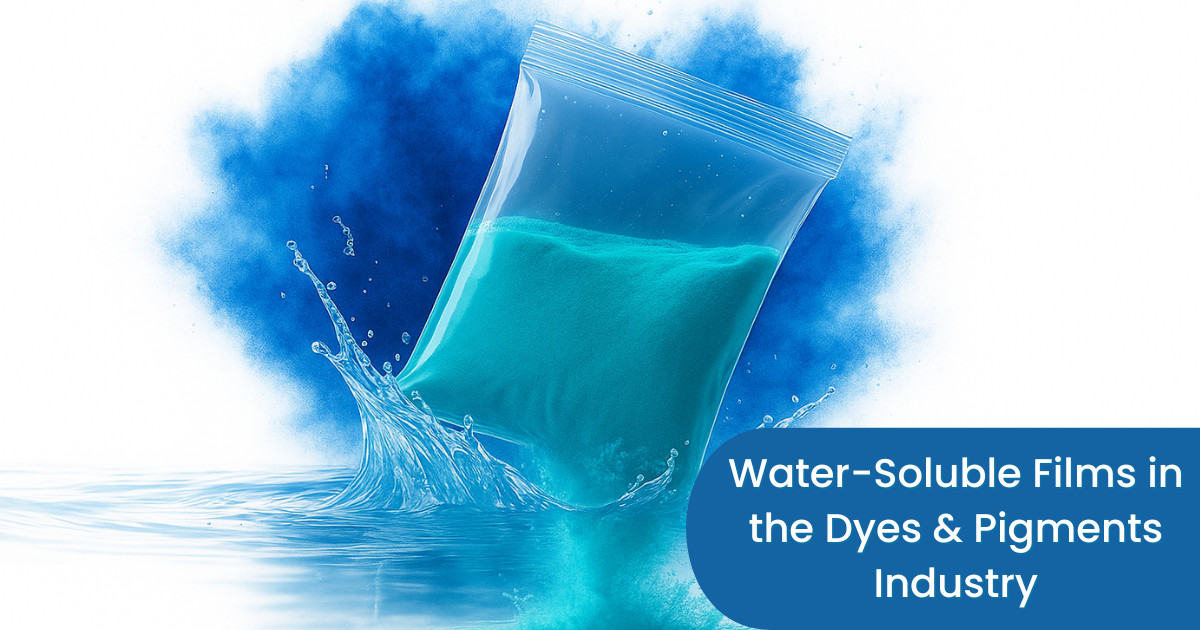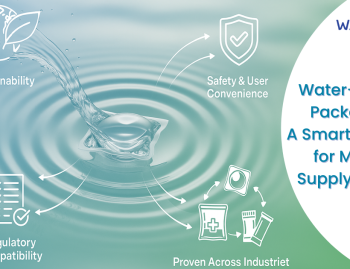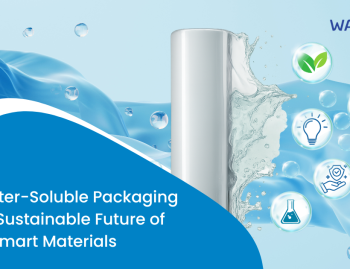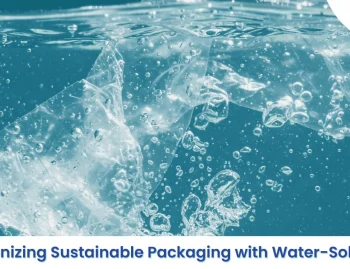
Packaging continues to play a pivotal role across industries — influencing product safety, operational efficiency, and environmental responsibility. Yet with global plastic production exceeding 300 million tons annually, the shift toward sustainable packaging alternatives has become essential.
In the dyes and pigments industry, where formulations involve concentrated chemicals and sensitive handling, the adoption of eco-efficient, water-soluble packaging materials offers dual advantages — safeguarding workers and end consumers while advancing sustainability goals. Even incremental moves toward environmentally responsible solutions can deliver measurable improvements in waste reduction, compliance, and overall brand value.
Sustainable Packaging and the Circular Economy
Sustainable packaging aligns with the principles of the circular economy — reducing waste, maximizing resource recovery, and minimizing environmental impact. Water-Soluble Films (WSF), made from biodegradable PVA, dissolve completely in water, leaving no residual packaging waste after use.
This zero-waste packaging solution integrates seamlessly into existing production systems and supports cleaner operations. Its versatility across temperature ranges and compatibility with various dye and pigment formulations make it both practical and future-ready. By replacing traditional plastics, manufacturers can reduce their carbon footprint and ensure safer, eco-friendly packaging disposal without compromising performance.
The Dyes & Pigments Landscape in India
India’s dyes and pigments industry continues to expand, fueled by demand from textiles, coatings, plastics, and personal care sectors. However, with this growth comes heightened awareness around environmental compliance, worker safety, and sustainable materials.
The industry faces pressing challenges, including chemical waste management, water contamination, and worker exposure risks, particularly from inhalation of fine pigment powders or dyes. Innovative solutions like Water Soluble Films are helping manufacturers address these issues by securely containing materials and minimizing direct human contact during production and packaging.
Environmental and Safety Challenges
Traditional packaging for dyes and pigments can generate chemical dust, spills, and handling risks that affect both the environment and worker health. When opened or filled manually, powders can become airborne, increasing the potential for inhalation-related health concerns and cross-contamination.
Using Water Soluble Films virtually eliminates the need for direct handling. The pre-measured pouches dissolve instantly in water, releasing contents safely into the process without generating dust or residue. This enhances workplace safety, supports cleaner air quality, and reduces chemical exposure and contributes to sustainable manufacturing practices.
Advantages of Water-Soluble Films in Dyes & Pigments Packaging
Water-Soluble Films provide a high-performance, environmentally sound alternative to conventional packaging — combining safety, efficiency, and sustainability.
Key Benefits:
• Excellent solubility across varying temperature ranges.
• Zero packaging waste — completely dissolves after use.
• Biodegradable and non-toxic, leaving no microplastic residue.
• Pre-measured, unit-dose packaging ensures precise formulation and prevents overdosing.
• Minimizes dust, spills, and airborne contamination, improving workplace safety.
• Reduces storage and transport volume, enhancing logistics efficiency.
• Adds product differentiation through sustainable innovation and compliance readiness.
Conclusion
As industries redefine their sustainability goals, Water Soluble Film packaging is transforming how dyes and pigments are handled, stored, and used. It not only promotes eco-friendly practices but also strengthens worker protection and process accuracy through safer, pre-measured dosing systems.
By adopting biodegradable and dissolvable film technologies, manufacturers can align efficiency with environmental stewardship — reducing waste, improving workplace safety, and supporting a more responsible, circular industrial ecosystem.
Water-Soluble Films are more than a packaging innovation — they are a pathway to smarter, safer, and more sustainable chemical manufacturing.





